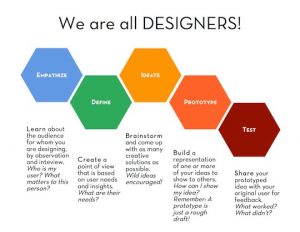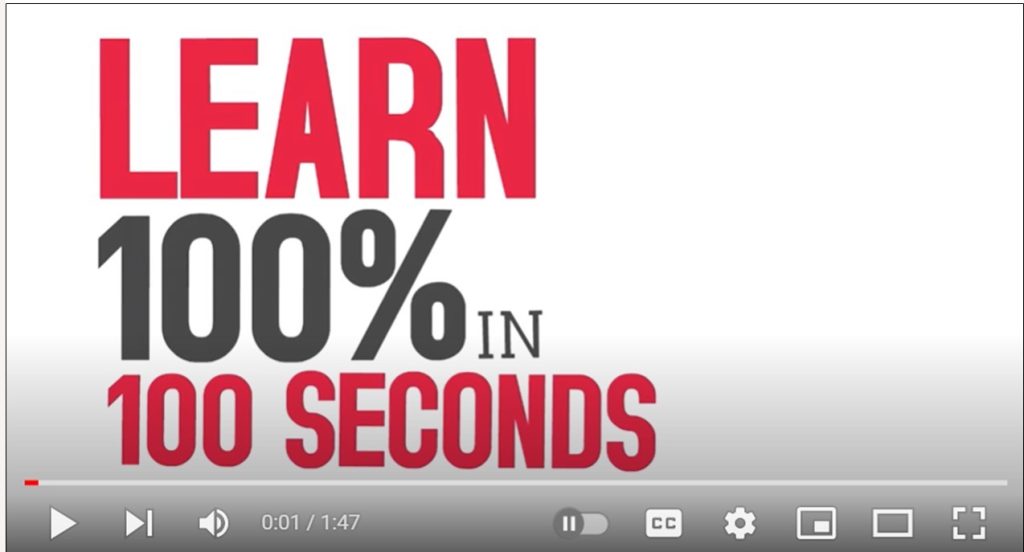1.1 KEY CONCEPT: Problem-Solving Approach to Communications Tasks
In the workplace, many of the communication tasks you perform are designed to solve a problem or improve a situation. Whether you are doing work for a client, for your employer, with your team, or for someone else, you will typically use some sort of organized process to tackle and solve the problem. A clearly articulated design process provides you with a clear, step-by-step plan for finding the best solution for your situation.
Take a moment to search the Internet for the term “design process” and look at “images.” You will find many variations. Have a look at several of them and see if you can find a common pattern.
One commonality you will likely find in examining other people’s design process diagrams is this: the first steps in designing any solution is to analyze the audience and then clearly define the problem. Analyzing the audience allows you to adapt the process to the needs of the audience. When defining the problem, you are also determining, in part, a course of action. Figure 1.1.1 shows Elon University’s basic design thinking process. Think about the kind of communication that each step of this process might entail.

You cannot begin to work on solutions until know your audience and have a clear definition of the problem and the goals you want to achieve. These critical first stages of the design process require that you effectively communicate with the “client” or whoever has the “problem” that needs solving. Poor communication at this stage can derail a project from the start.
Before we examine the step-by-step process to developing a business/research problem, the video below will review the importance of clearly defining a business/research problem.
For our purposes, we will use Barry Hyman’s Problem Formulation model (2002) to clearly define a problem. Hyman’s Problem Formulation model consists of four elements:
- Need Statement: recognizes and describes the need for a solution or improvement to an “unsatisfactory situation.” It answers the questions, “what is wrong with the way things are currently? What is unsatisfactory about the situation? What negative effects does it cause?” You may need to do research and supply data to quantify the negative effects.
- Goal Statement: describes what the improved situation would look like once a solution has been implemented. The goal statement defines the scope of your search for a solution. At this point, do not describe your solution, only the goal that any proposed solution should achieve. The broader you make your goal, the more numerous and varied the solution can be; a narrowly focused goal limits the number and variety of possible solutions.
- Objectives: define measurable, specific outcomes that any feasible solution should optimize (aspects you can use to evaluate the effectiveness of the solution). Objectives provide you with ways to quantifiably measure how well any solution will solve the problem; ideally, they will allow you to compare multiple solutions and figure out which one is most effective (which one gets the highest score on meeting the objectives?).
- Constraints: define the limits that any feasible solution must adhere to in order to be acceptable (pass/fail conditions, range limits, etc.). The keyword here is must — constraints are the “go/no go” conditions that determine whether a solution is acceptable or not. These often include budget and time limits, as well as legal, safety and other regulatory requirements.
Knowledge Check
Communication as Solution
While not all business communications, like messages of appreciation and confirmation, respond to problems, this model can apply to communications tasks and more project-related design tasks that focus on problem-solving. In such cases, before you begin drafting the document or presentation, define the problem you want to solve:
- Understand the Need: Consider what gave rise to the need to communicate. Does someone lack sufficient information to make a decision or take a position on an issue? Did someone request information? Is there some unsatisfactory situation that needs to be remedied by communicating with your audience? What specifically is unsatisfactory about it? Consider your audience. For example,
- A potential client lacks sufficient information on whether the solution I have proposed to solve the client’s problem will be feasible, affordable, and effective.
- My instructor lacks sufficient examples of my written work to assign a grade for how well I met the course learning objectives.
- Establish a Goal: Consider your purpose in writing. What do you want your reader to do, think, or know? Do you want your reader to make a decision? Change their opinion or behaviour? Follow a course of action? What is your desired outcome? And what form and style of communication will best lead to that outcome? For example,
- Provide the client with enough information, in an effective and readable format, to make a decision (ideally, to hire you to create a solution for the problem).
- Provide my instructor with samples of my writing that demonstrate my achievement of the course learning objectives (provide relevant and complete information in a professionally appropriate format, using evidence-based argument; earn an A+ grade on the assignment.)
- Provide the client with enough information, in an effective and readable format, to make a decision (ideally, to hire you to create a solution for the problem).
- Define Objectives: Consider the specifics of your message and your audience to determine what criteria you should meet. What form should it take? What content elements will you need to include? What kind of research will be required? What information does your audience want/need? What do they already know? For example,
- Review the client’s RFP to see what specific objectives it lists and how your proposal will be assessed.
- Review the Assignment Description and Grading Rubric for your assignment to determine specific requirements and objectives that your instructor will use to evaluate your work.
- Identify Constraints: Consider your rhetorical situation. What conditions exist that present barriers or challenges to communication? How can you address them? What are the pass/fail conditions of this document? For example,
- How much time is your audience willing to spend on this? How long can you make your document or presentation? (word length/time limit)
- What format and style do they require? Is there a Style Guide you must follow? A template you can use?
- How much time do you have to create it? Do you have a deadline? (due date)
- Are there requirements for using sources? (academic integrity rules)
In addition to the process above, the following video provides a slightly different problem-solving process; however, it incorporates many of the same principles described above.
(How to Solve a Problem in Four Steps, 2015)
Keep in mind that the document you produce is evaluated in terms of how well it meets the overall goal and demonstrates achievement of specific objectives while abiding by constraints.
Knowledge Check
EXERCISE 1.1.1 Define a problem
Think of a problem or an “unsatisfactory situation” that you have recently experienced. It could be as simple as It’s 8 p.m., I haven’t had dinner yet, and I’m hungry. Use Hymen’s Problem Formulation schema to formally define the problem — without proposing any particular solutions. Your problem definition should ideally allow a multitude of possible solutions that adhere to the following:
- Need/Unsatisfactory situation?
- What is your goal?
- What are some measurable objectives you want to achieve?
- What are your constraints?
Map out your analysis to find the most logical next steps.
References
00% Effective. (2015). What is a Problem Statement? [Video]. Youtube. https://www.youtube.com/watch?v=vjCCC2kFJcQ&t=43s
DecisionSkills. (2015). How to solve a problem in four steps [Video]. Youtube. https://www.youtube.com/watch?v=QOjTJAFyNrU
Hyman, B. (2002). Ch. 2: Problem formulation. In Fundamentals of engineering design. Upper Saddle River, NJ: Prentice Hall, pp. 40-54.
NASA. (2018, January 30 updated). NASA design process. NASA STEM Engagement. https://www.nasa.gov/audience/foreducators/best/index.html Used for educational and noncommercial purposes.


